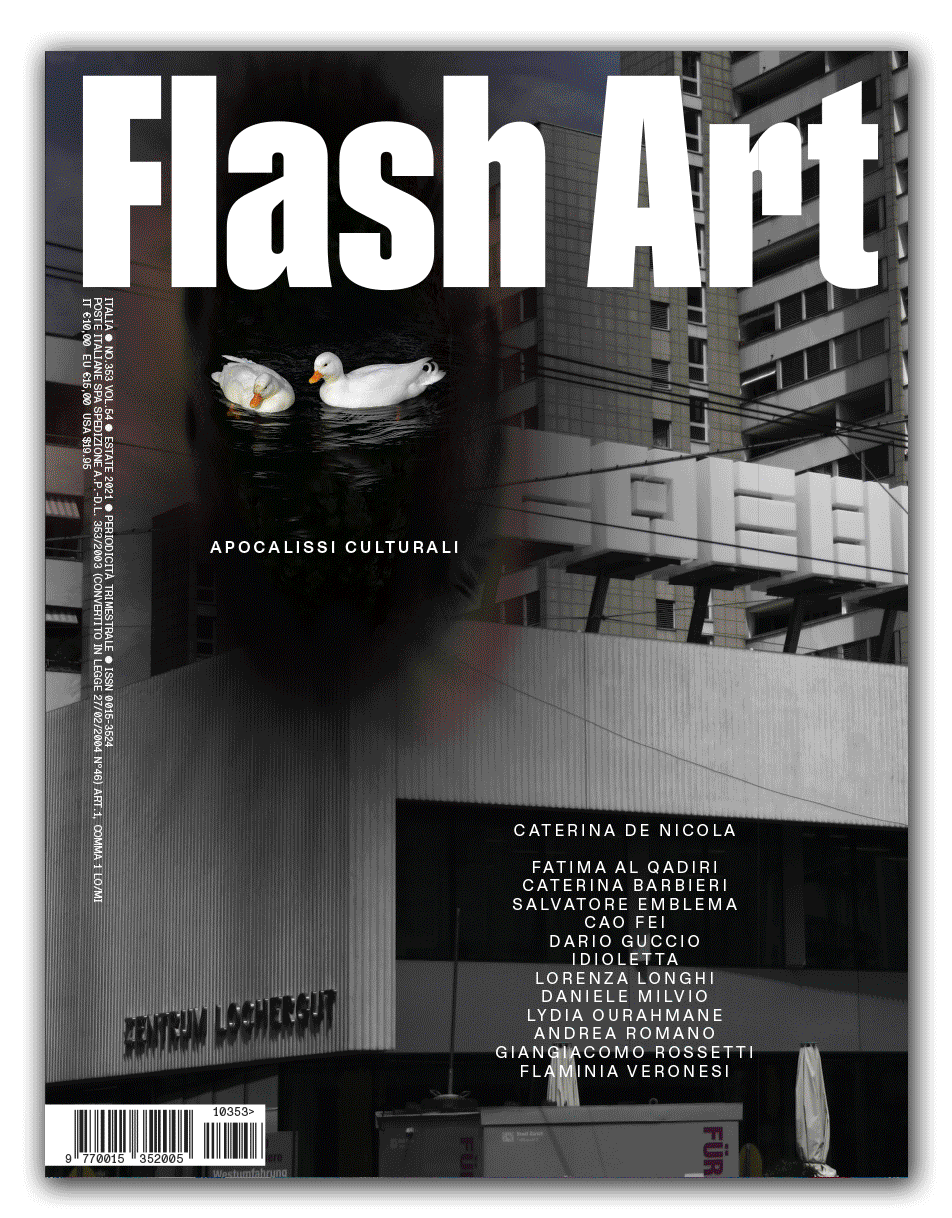June 14, 2021
In this issue, writer and philosopher Federico Campagna, in a surprising conversation with Andrea Bellini about the end of the world, explains that a world is a “‘likely story’ about reality” and that “after a while, each cosmological narration exhausts its narrative cycle and it comes to an end: its future runs out and an apocalypse befalls it.” According to Campagna, each of us go through several “ends of the world.” As we continue to witness a host of more-or-less subjective historical apocalypses, and as our tenure on this planet approaches an existential end due to any number of potentially irreversible processes already under way, could it be useful to take stock of our current “cultural apocalypse”? Are we merely going through the usual aesthetic clashes and mediumistic innovations, or is a more categorical transition afoot?
Part of the difficulty of teasing out such a distinction is that all cultural evolution is intimately intertwined with the other forces that shape (and inevitably lead to the collapse of) a given cosmos. Political, social, economic, and cultural factors all drive the end of a world, as we have come to understand from studying pre-Columbian civilizations, the ancient Egyptians, or even more recent paradigm shifts in Central and Eastern Europe. One of the fallacies of Western culture is that art can be pursued in a rarified realm divorced from the struggles of everyday reality. Still, as Campagna argues in his new book, Prophetic Culture, we are just as responsible for our cultural legacy as we are for global warming and economic and social injustices. As custodians of the former, we can try to foster positive change across all of these fronts as we navigate the ever-rising waters.
Spanning from these reflections the cover stories of the Italian edition deal with cultural transitions which interests current artistic productions, through different languages: Caterina De Nicola in conversation with Attilia Fattori Franchini talks about the post-aesthetic condition of the image and how social structures impact on it; Ilaria Gianni analyses Lorenza Longhi’s work through the lenses of “ruin,” as form of a resistance to present structures; moreover a visual project specially conceived by Flaminia Veronesi reveals an apocalyptic intersectional imagery.
Also in this issue: a special project with drawings by Dario Guccio, Daniele Milvio and Giangiacomo Rossetti realised from the idea of apocalypse, which we can find in other ways within the project made by Idioletta—Mattia Capelletti and Costanza Candeloro; musician Caterina Barbieri dialogues with her colleague and longtime friend Ruben Spini about the creative scenes that are inscribed in a even more fragmentary creative contexts. Besides Alessandro Bava, for his second episode of the column titled “SPAZIO,” propose an archive project on the spatial research of Salvatore Emblema.
Reviews: Grief and Grievance: Art and Mourning in America, New Museum, New York / Niki de Saint Phalle: Structures for Life, MoMA PS1, New York / Yayoi Kusama: A Bouquet of Love I Saw in the Universe, Gropius Bau, Berlin / Alain Jacquet: Jeux de Jacquet, Galerie Perrotin, Paris / Age of You, Jameel Arts Centre, Dubai / Regina Cassolo Bracchi, REGINA. DELLA SCULTURA, GAMeC, Bergamo / Hannah Villiger, Works / Sculptural, Istituto Svizzero, Rome
Get your print copy here or subscribe for digital access here.

